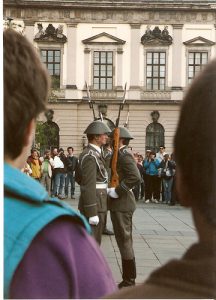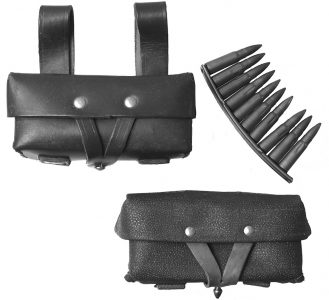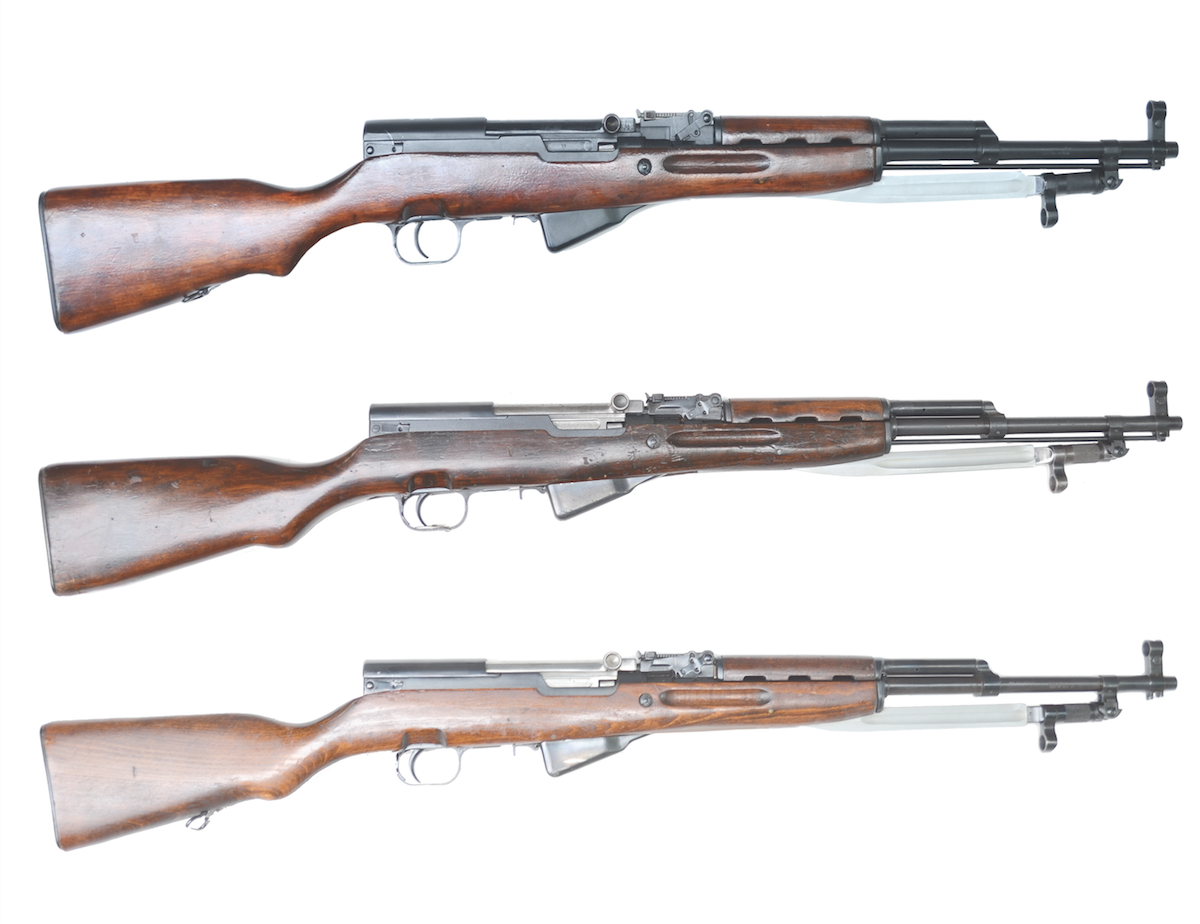
Although a relatively short-lived design, the 7.62x39mm SKS carbine is a popular and collectible MilSurp firearm with numerous variations. Shown from top to bottom: Russian CK45g, Chinese Type 56 and Romanian M56 carbines.
To learn more, visit www.northcapepubs.com or email [email protected].
To purchase an SKS rifle on GunsAmerica.com, click this link: https://www.gunsamerica.com/Search.aspx?T=SKS%20rifle.
 Editor’s Note: This piece was written by Joe Poyer, coauthor of the book The SKS Carbine (CK45g). If you would like to explore the SKS carbine in greater detail, you can obtain a copy of the book from North Cape Publications, Inc., PO Box 1027 Tustin CA 92781. The price is $22.95 plus $5.75 postage. To obtain a 12% discount, use the code GANC when ordering.
Editor’s Note: This piece was written by Joe Poyer, coauthor of the book The SKS Carbine (CK45g). If you would like to explore the SKS carbine in greater detail, you can obtain a copy of the book from North Cape Publications, Inc., PO Box 1027 Tustin CA 92781. The price is $22.95 plus $5.75 postage. To obtain a 12% discount, use the code GANC when ordering.
The SKS Carbine has been called the Soviet Union’s M1 Carbine. Like the M1 Carbine, it was designed as a lightweight, semi-automatic rifle that was handier than the standard infantry rifle. The 7.62×39 mm cartridge of the SKS was less powerful when compared to that of the issue 7.62x54R mm rifle cartridge employed in rifles such as the M91/30 and the M44 Carbine, but it enabled the carbine to fire much faster than those bolt-action rifles and with far less recoil. Like the M1 Carbine, it was manufactured in a number of various factories. But there the similarities end.
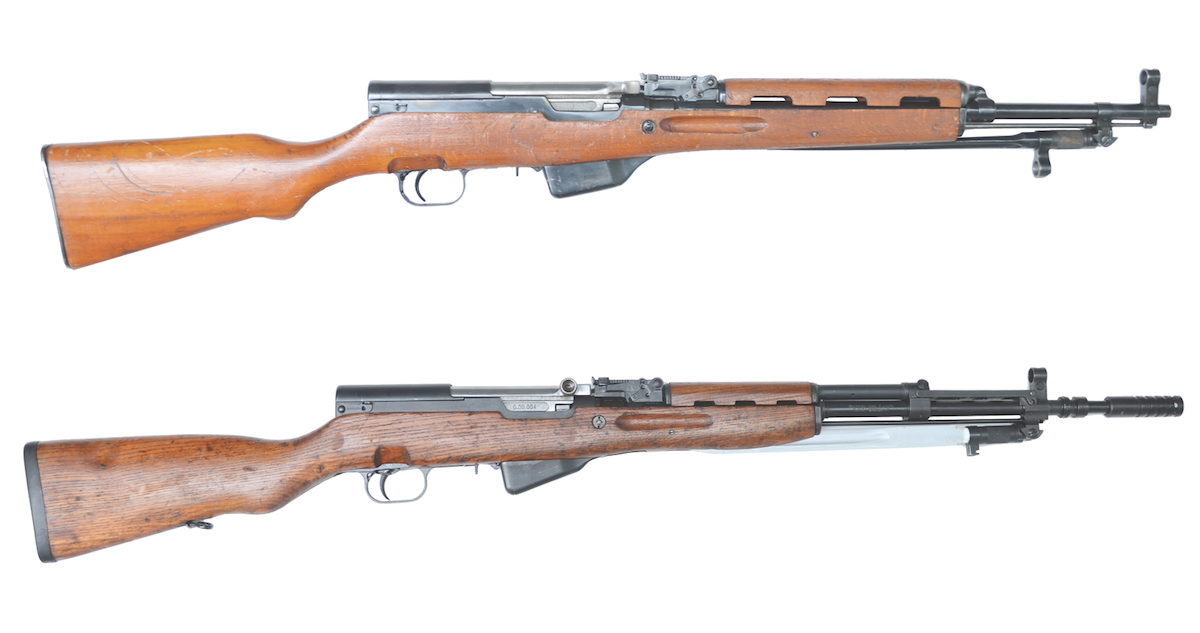
Other variants include (from top to bottom) the rare Albanian Independence Carbine and the Yugoslav Model 1959/66 Carbine.
The M1 Carbine, originally intended to replace the Model 1911A1 .45 pistol, went on to become a general issue shoulder arm during World War II and the Korean War. The SKS Carbine, first developed in the mid-1940s and officially issued to Soviet forces in the late 1940s, was almost instantly replaced by the AK-47 Kalashnikov rifle which began full production around 1950. Manufacture of the SKS in the Soviet Union ended in the mid-1950s and the SKS was relegated to para-military, police and ceremonial units.
With large stocks of the SKS in warehouses, the Soviets began offering the carbine and its design to Warsaw Pact members and to “friendly” nations around the world. A total of twenty-one countries adopted the SKS carbine on four continents.
The SKS is understood to have been manufactured in seven countries aligned at one point or another with the Soviet Union: 1) Albania, 2) the People’s Republic of China, 3) Democratic German Republic (East Germany), 4) North Korea, 5) North Vietnam, 6) Romania and 7) Yugoslavia. Because it was manufactured in over a dozen factories in eight different countries (counting Russia), there are certain differences besides markings in the way some parts were manufactured. The collector can use these markings and differences to determine the country of origin and decide if all the parts are original manufacture. The collector should also keep in mind that almost all SKS carbines are surplus military. (Figure 3)
The exception is the Chinese-manufactured M21 SKS Carbine which was produced for commercial sale abroad. These can be distinguished by their stamped sheet metal receivers and barrels that are pinned rather than screwed into the receiver.
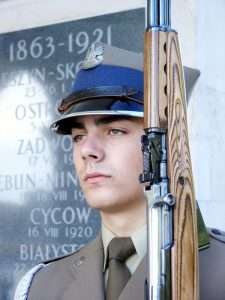
Poland did not manufacture the SKS carbine domestically, but did issue Russian-based models for ceremonial purposes.
It is relatively easy to determine the country of origin of an SKS carbine from markings on the receiver and bolt cover as shown in the accompanying chart. But it is very difficult to determine if the individual parts—which are not serial numbered to the receiver—are original to that carbine.
While the SKS Carbine has eighty-five parts, only seven—or eight, depending on the manufacturer—are serial numbered. Most of the parts will interchange with minor fitting. But those parts that do not interchange can pose problems if you are trying to repair or refurbish an SKS with parts from the surplus market.
The most common part of the SKS Carbine needing repair or replacement is the bolt. Fortunately, tolerances are a bit loose by Western-manufacturing standards, but great caution must be observed in changing or replacing them. NOTE: It is always wise to check the head space on any surplus military firearm before shooting it or following repairs or the exchange of a bolt. Even if you do not intend to shoot it, someone else might. The proper SKS headspace according to SAAMI (Sporting Arms and Ammunition Manufacturers’ Institute) is 1.8743 + .0005. The case headspaces on the shoulder.
[one_half]
[/one_half]
[one_half_last]
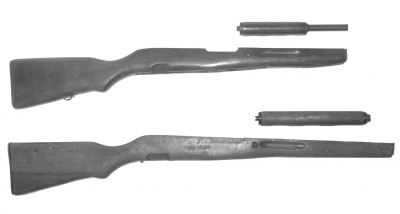
The forearm and handguard for the Albanian Independence Carbine (below) are longer that the standard SKS Carbine fore end and handguard.
[/one_half_last]
A good example for the need of caution when swapping parts is the firing pin: Six different types of firing pins were manufactured. One type of firing pin, the Type 4 used the in Romanian SKS, can be installed in most SKS carbines, but it can be inserted upside down by mistake. It will then jam in the forward position and can cause a dangerous slam fire. Some firing pins made in Russia (Type 1) used a spring to withdraw/retract it. These springs were usually discarded from Russian SKS carbines when they were sold on the international market. If you have a Russian SKS with a firing pin spring, your carbine is worth a premium. The Type 6 firing pin can only be used safely in Chinese-manufactured SKS carbines with sheet metal receivers. They cannot be used in any other SKS carbine.
 Three bolt types and two extractors were manufactured for the SKS. The parts are not always interchangeable without modification. (Figure 5) Because of a difference in design, a Type 2 bolt (the most common) cannot be used in a Type 1 bolt carrier, but a Type 1 bolt will work in a Type 2 bolt carrier. The Type 3 bolt cover manufactured in Albania has a solid bolt handle, similar to the AK-47. It can be hard to fit on non-Albanian carbines.
Three bolt types and two extractors were manufactured for the SKS. The parts are not always interchangeable without modification. (Figure 5) Because of a difference in design, a Type 2 bolt (the most common) cannot be used in a Type 1 bolt carrier, but a Type 1 bolt will work in a Type 2 bolt carrier. The Type 3 bolt cover manufactured in Albania has a solid bolt handle, similar to the AK-47. It can be hard to fit on non-Albanian carbines.
The trigger assembly of the SKS was specifically designed to be manufactured under wartime conditions with the least number of precision tools. Three types of trigger guards were manufactured: Most Type 1 and Type 2 will interchange with minor fitting, but the Type 3 trigger guard was designed for use with Chinese-manufactured sheet metal receivers sold commercially and will not interchange.
Most stocks will interchange on all other SKS Carbines, except for the Albanian. The factory for the Albanian SKS carbines was built by the Chinese, but the Albanians decided to diverge from the basic design and lengthen the forend (among other differences). An Albanian stock will not fit on any other SKS.
Bayonets are a tricky proposition. Two types were used and all were attached to the barrel and folded back into the forearm. The blade bayonet was the original and used on most European-manufactured carbines and early Chinese-manufacture SKS carbines to 1965. The cruciform, or spike, bayonet was used on all succeeding Chinese and all Albanian-manufactured SKS carbines. The standard blade bayonet is 11.4 inches long, while the two Yugoslav bayonet variations are 9.4 inches and 11.3 inches long and are not interchangeable with other SKS carbines.
If you would like to explore the SKS Carbine in greater detail, obtain a copy of The SKS Carbine (CK45g) from North Cape Publications, Inc., P.O. Box 1027, Tustin, CA 92781. The price is $22.95 plus $5.75 postage. To obtain a 12% discount, use the code GANC when ordering. Models and parts are described by country of manufacture. Serial numbers deciphering is included for many models and Chinese factory symbols are illustrated.
 To learn more, visit www.northcapepubs.com or email [email protected].
To learn more, visit www.northcapepubs.com or email [email protected].
To purchase an SKS rifle on GunsAmerica.com, click this link: https://www.gunsamerica.com/Search.aspx?T=SKS%20rifle.
